

|
|
|


|
|
1/8 Scale Electric Formula One Car:
Kyosho Williams Renault FW14 EP - 4246
|
Released by Kyosho in 1992, the Williams Renault FW14 EP Formula 1 Racing Car - # 4246 - was based on the car driven by Nigel Mansell and Riccardo Patrese in the 1991 F1 Championship, finishing a creditable 2nd in the Constructors' Championship with one hundred and twenty five points. The following year, with the FW14B version of the car, Nigel Mansell won his first and only Drivers Championship title.
The unassembled kit came with an unpainted polycarbonate Bodyshell, a Mega Outlaw Stock Motor, and molded plastic Wheels with foam Tires. A Radio System, ESC, Battery and Charger to be purchased separately.
Now considered rare, all the early 1990s Kyosho F1 RC models are much sought after by ardent collectors the world over.
Check out our Kyosho Archive for other F1 models.
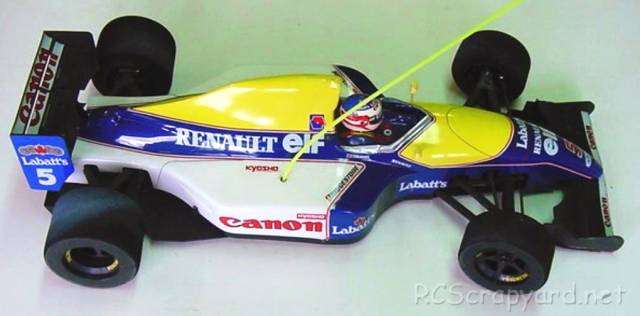
The 2WD model is based on a two piece FRP/alloy plate chassis (with room for two Electric Motors to be installed), front and rear double wishbone suspension with inboard coil spring over oil filled dampers (front - laydown, rear - upright), a gear type differential, anti-roll bars, dogbone drive-shafts and sintered bronze bushings, that after a short while, when dust and grit get into them, can abrade the metal shafts that spins in them. If you are building this kit to race seriously these should be replaced by steel ball bearings ASAP.








|
|
|

★ Kyosho Williams Renault FW14 EP - 4246 ★
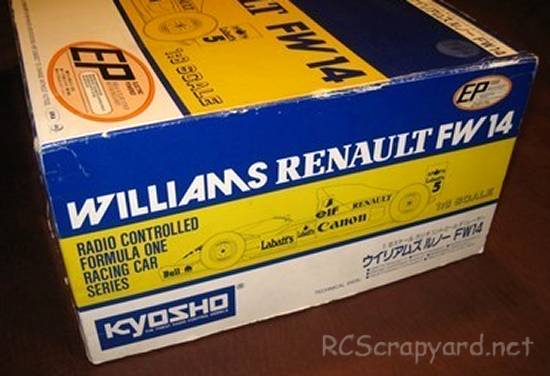
★ Kyosho Williams Renault FW14 EP - Chassis ★
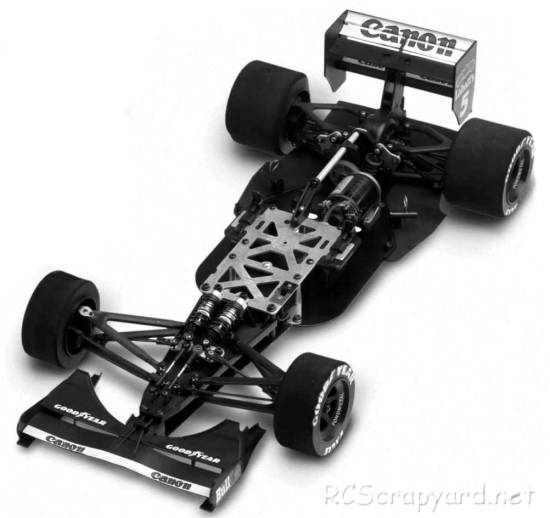
★ Kyosho Williams Renault FW14 EP - Chassis ★
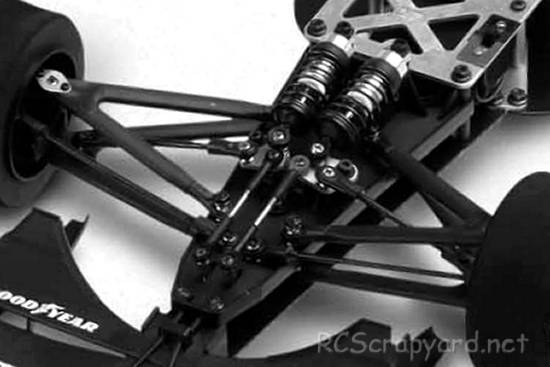
★ Kyosho Williams Renault FW14 EP - Chassis ★
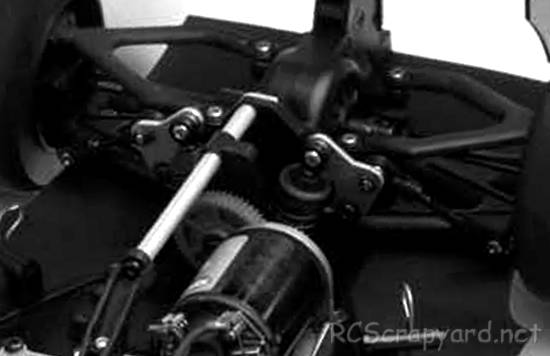
★ Kyosho Williams Renault FW14 EP - Chassis ★
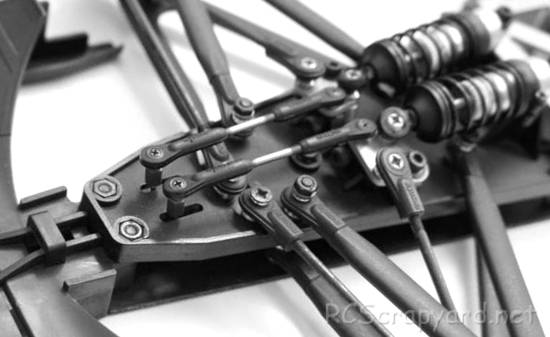
★ Kyosho Williams Renault FW14 EP - Chassis ★
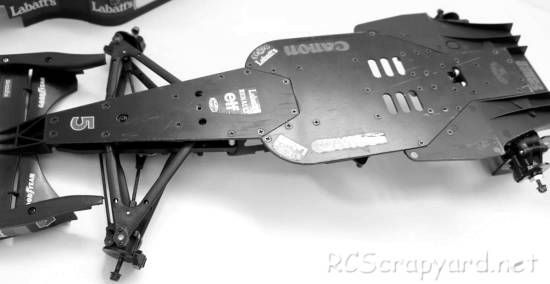
★ Kyosho Williams Renault FW14 EP - Chassis ★
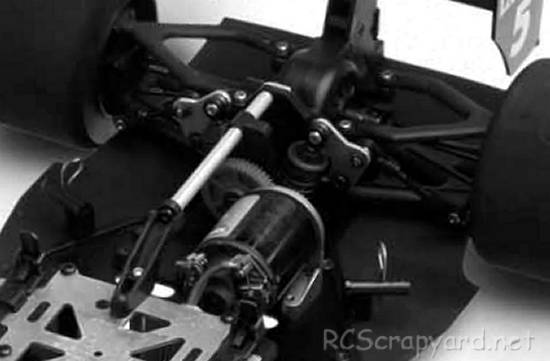
★ Kyosho Williams Renault FW14 EP - Chassis ★
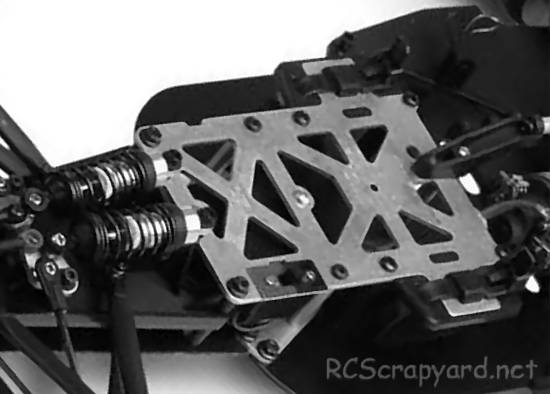
★ Kyosho Williams Renault FW14 EP - Chassis ★
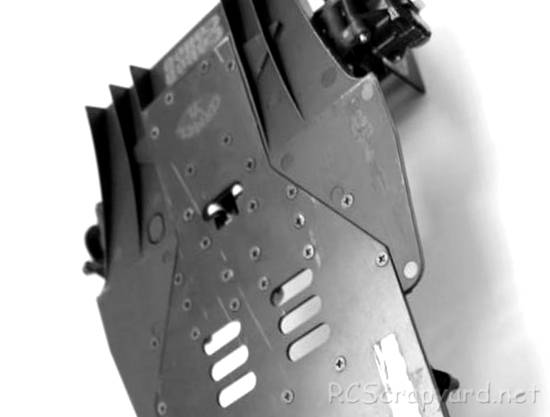
★ Kyosho Williams Renault FW14 EP - Chassis ★
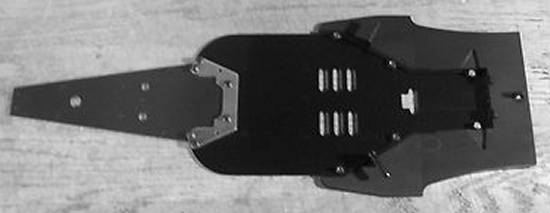
|
Buying a Used Radio Controlled Model
|
|
Manufacturers and Brands Catalogued, Listed and Reviewed by RC-Scrapyard.
At present, the RC Model Manufacturers, Brands and Distributors covered by us are: ABC Hobby, Academy, Acme Racing, Agama Racing, Amewi, Ansmann Racing, ARRMA, Team Associated, Atomic RC, Axial, AYK, Bolink, BSD Racing, Capricorn, Carisma, Carson, Caster Racing, Cen, Corally, Custom Works, Durango, Duratrax, ECX - Electrix, Exceed RC, FG Modellsport, FS-Racing, FTX, Fujimi, Gmade, GS-Racing, Harm, HBX, Helion, Heng Long, Himoto Racing, Hirobo, Hitari, Hobao, Hong-Nor, Hot Bodies, HPI, HSP, Intech, Integy, Jamara, JQ Products, Kawada, Kyosho, Losi, LRP, Maisto, Mardave, Marui, Maverick, MCD Racing, Megatech, Mugen, New Bright, Nichimo, Nikko, Nkok, Ofna, Pro-Pulse, Protech, PTI, RC4WD, Redcat Racing, RJ-Speed, Robitronic, Schumacher, Seben, Serpent, Smartech, Sportwerks, Step-Up, Tamiya, Team-C Racing, Team Magic, Thunder Tiger, Tomy, Top Racing, Traxxas, Trinity, Tyco, Vaterra RC, Venom, VRX Racing, WLToys, X-Factory, Xmods, Xpress, Xray, XTM, Yankee RC, Yokomo, ZD Racing and Zipzaps. |
|
Hints, Tips and Information
Battery Connectors
Over the years I have been racing radio controlled model cars of all descriptions, I have tried a number of different connectors for my batteries.
|
|
Hints, Tips and Information
Radio Frequencies - be Careful be Safe
After buying your first car, it won't be long before you need more than simply bashing around the back yard, or out on the street. So you will be looking around to find a club that is not too far away where you can do some serious racing. |
|
RC Models:
|
Radio & Motors: |
Other
Accessories: |